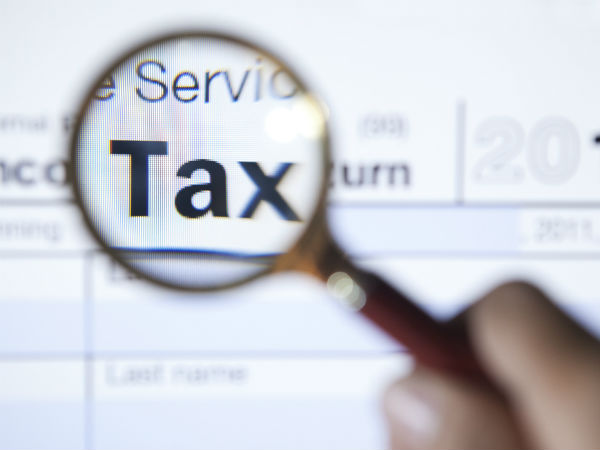3 Types of Income Tax Benefits Under NPS That Tax Savers Need To Know
The National Pension System (NPS) is a pension-building investment program in which individuals aged 18 to 70 can save for their retirement years. The Scheme is governed by the Pension Fund Regulatory and Development Authority (PFRDA) and provides subscribers with market-based returns. Like the Public Provident Fund (PPF), NPS doesn't provide you EEE (exempt-exempt-exempt) benefits, but under Sections 80CCD (1) and 80CCD (1B), you can claim a deduction for contributions made towards your NPS account. During the active account period, income earned from NPS is exempted from tax but the annuity received is subject to taxation. But for a wise tax saver who wants to invest in NPS for peaceful old age days, knowledge about the three types of tax benefits under NPS is a must which is briefly discussed below.

Income tax benefits under Section 80CCD (1)
Contributions made by an individual taxpayer towards the NPS Tier-I account are eligible for a tax benefit under section 80CCD (1). Subscribers who contribute any amount to their NPS account throughout the financial year are eligible for a deduction from their total salary of up to 10% of their basic pay for salaried individuals and 20% of their total income for non-salaried individuals.
For the contributions made by a subscriber or through the employer i.e. as a deduction from salary income, the deductions are applicable under NPS. The deduction allowed under this provision, however, is limited to the total maximum of Rs 1.5 lakh set by Section 80CCE of the Act.
The cumulative amount of deduction allowable under sections 80C and 80 CCD(1) of the Income-tax Act is determined under section 80CCE and consequently, in a financial year, contributions made under section 80C and section 80CCD (1) should not surpass the stated maximum of Rs 1.5 lakh. It's worth noting that Sections 80C, 80CCC, and 80CCD (1) of the Income Tax Act allow a maximum total exemption of Rs 1.5 lakh.

Income tax benefits under Section 80CCD (2)
Individuals can claim a tax advantage under 80CCD (2) against the contributions made by their employer towards an NPS Tier 1 account on their behalf. The contributions made by the employer are deductible under Section 80CCD(2) of the Income Tax Act, up to a maximum of 10% of basic pay including Dearness Allowance (DA) for the financial year.
The said deduction is in addition to the deduction for employee contributions and it is not subject to the total maximum of Rs 1.5 lakh set forth in Sections 80CCE and 80CCD (1b). Employer contributions to NPS can be claimed as a 'Business Expense' from their Profit & Loss Account up to 10% of salary (Basic + DA). Employers can contribute up to 10% of an employee's income in an NPS Tier-I account, and up to 14% for central government employees, according to current tax rules.

Income tax benefits under Section 80CCD(1B)
The Income-tax Act's Section 80CCD(1B) enables a deduction of Rs 50,000 in addition to the Rs 1.5 lakh allowed by Section 80CCE. In a financial year, a taxpayer can seek a total of Rs 50,000 as tax breaks under section 80CCD (1b). This tax advantage of Rs 50,000 is in addition to the tax benefits provided under sections 80CCD (1) and 80CCD (2). As a result, if a subscriber has over the Rs 1.5 lakh limit under Section 80CCE apart from NPS, self- or employer-made contributions to NPS can be used to claim an additional deduction of Rs 50,000 under Section 80CCD (1B). Individual taxpayers can deduct up to Rs 50,000 under Section 80CCD (1B) for PF contributions of Rs 1.5 lakh and NPS contributions of Rs 50,000 made by self or have deducted from their income by their employer.

Tax benefits under NPS apart from section 80CCD
Along with the tax breaks provided under Section 80CCD, subscribers can withdraw funds from their NPS tier I account partially before reaching the age of 60 for emergency causes specified under NPS. The amount withdrawn up to 25% of the contribution made by the subscriber is tax-free.
The amount contributed for purchasing an Annuity is also tax-free. The annuity income you receive is subject to taxation in the subsequent years. Once the subscriber reaches the age of 60, up to 40% of the overall corpus withdrawn in a lump sum is tax-free.
For example, if you have a total corpus of 20 lakhs in your account at the age of 60, you can withdraw 40% of the entire corpus, without paying any tax which is Rs 8 lakhs. Hence, if you withdraw 40% of your NPS corpus as a lump sum, and make an annuity purchase using the remaining 60% of the corpus, you will not be subject to taxation.































